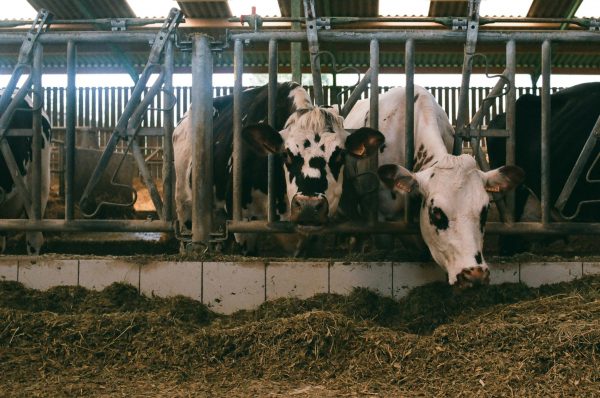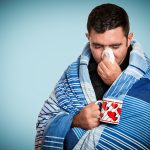Even though I mostly eat veggies, I do love an exceptionally high-quality piece of meat on occasion. I might make some braised grass-fed lamb cooked to perfection. Or maybe I will cook up some grass-fed and grass-finished bison, and pile it high with toppings for a burger. Some nights, I’ll try a beautiful piece of wild-caught salmon beside some delicious grilled veggies.
When I enjoy one of these meat dishes, which is perhaps once a week, the one thing I’m looking for is exceptional quality.
Well, that kind of quality is something you will not and cannot get from commercial meat products.
You see, commercial ranchers don’t raise cattle in wide-open fields eating grass, which is the food they evolved to eat. Instead, they’re locked up in feedlots and fed an unnatural diet of corn grains. This fattens them up and gets them to slaughter faster.
But this kind of diet makes them sick.
Basically, it damages their digestive system and gives them liver abscesses. So by the time they get to the slaughterhouse, they’ve got infected livers and organs. All of the meat in those regions has to be cut away and discarded. (You are buying the meat that was sitting right next door to those infected and discarded regions!)
Additionally, you have to consider the way these animals are raised. It’s inhumane. The feedlots are disgusting. You’ll smell one long before you see it. This is where the cattle are jammed into enclosures and spend their lives laying around in their own manure. They’re still caked with it when they enter the slaughterhouse.
I guess that’s why more than 40% of all “medically important antibiotics” (meaning that they are used in human medicine) are used by cattle producers.
Nobody Should Eat Sick Meat
Would you rather eat meat from a sick, dirty, obese animal that has been pumped full of drugs that lead to antibiotic resistance; or from a healthy, active and disease-free animal raised in a natural, outdoor environment?
Personally, I always go with option number two.
I obviously don’t want a big dose of antibiotics with any of my meals… ones that could fatten me up and expose me to antibiotic resistant bacteria that could lead to antibiotic resistance.
That’s why I always buy grass-fed.
Plus, the nutrient profile of grass-fed meat is so much better than that found in commercial meats.
It contains much higher levels of conjugated linoleic acid (CLA). This acid has antitumor activity, protects against cancer, builds muscle and helps discourage weight gain.
Grass-fed beef has a better omega-6 to omega-3 ratio. This is important, because a high omega-6 to omega-3 ratio is inflammatory. For grass-fed the ratio is 1.53 to1 versus commercial meat at 7.65 to 1. So it’s markedly less inflammatory.
It also has more glutathione, carotene and fat-soluble vitamin E. Glutathione is often called the “master antioxidant.” It’s great for your immune system and all of the cells in your body. Vitamin E tocopherols, support the immune system, fight off bacteria and reduce blood clotting. And the carotenes make vitamin A that is important to so many of your body systems.
Stay Away from Sick Fish, Too
Eating fish that’s farm-raised is a lot like eating commercial meat. These fish are jammed up together in tanks, pens and enclosures. So, parasites, viruses and disease are all big concerns.
You know what this means, right? The fish farmers have to keep them healthy with the liberal use of antibiotics, fungicides and pesticides.
Many popular types of fish are farm-raised. Salmon, tilapia, catfish and cod are just a few. But farm-raised salmon might just be the unhealthiest of all. A high percentage of them die before they even get to harvest.
As a matter of fact, a July, 2022 TIME article about farm-raised salmon noted that…
“Massive doses of pesticides, including banned neurotoxins, and antibiotics are deployed against the parasites and pathogens… Untreated waste from excess feed, decomposing fish, excrement, and chemical residue forms a toxic stew that kills or drives away marine life for hundreds of yards. One photo we found showed a yardstick stuck to the 32-inch mark in slime beneath a salmon farm.”
You can see why I always recommend wild-caught fish, right?
Still, even wild-caught fish will contain some environmental pollutants, including microplastics, but at much lower levels. The lower the fish is on the food chain, the fewer they will contain. (You can cut toxins even further by removing the skin and organs before cooking.)
Some of your best choices will be wild-caught Pacific halibut, mackerel, Alaskan salmon, sardines, herring, rainbow trout and flounder.
Remember, the healthier the food you eat is, the healthier you will be.
SOURCES:
Better Burgers: Why It’s High Time the U.S. Beef Industry Kicked Its Antibiotics Habit. Natural Resources Defense Council (NRDC). Jun 2020.
Lee KW, Lee HJ, Cho HY, Kim YJ. Role of the conjugated linoleic acid in the prevention of cancer. Crit Rev Food Sci Nutr. 2005;45(2):135-44.
Daley CA, Abbott A, Doyle PS, Nader GA, Larson S. A review of fatty acid profiles and antioxidant content in grass-fed and grain-fed beef. Nutr J. 2010;9:10. Published 2010 Mar 10. doi:10.1186/1475-2891-9-10
3 Reasons to Avoid Farmed Salmon. TIME. Jul 2022.
Carlson DL, Hites RA. Polychlorinated biphenyls in salmon and salmon feed: global differences and bioaccumulation. Environ Sci Technol. 2005 Oct 1;39(19):7389-95.



